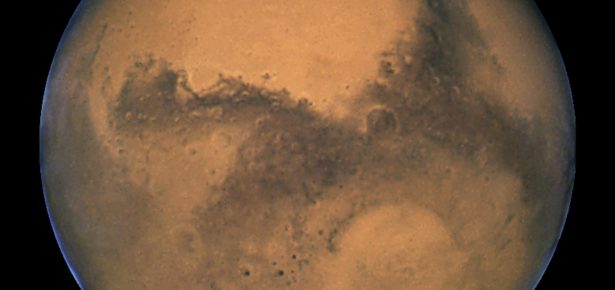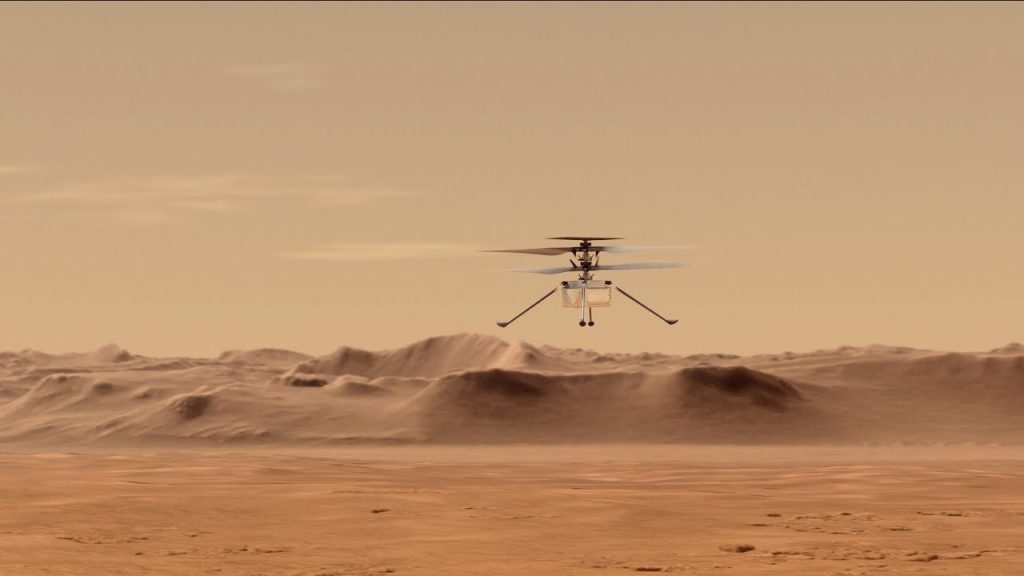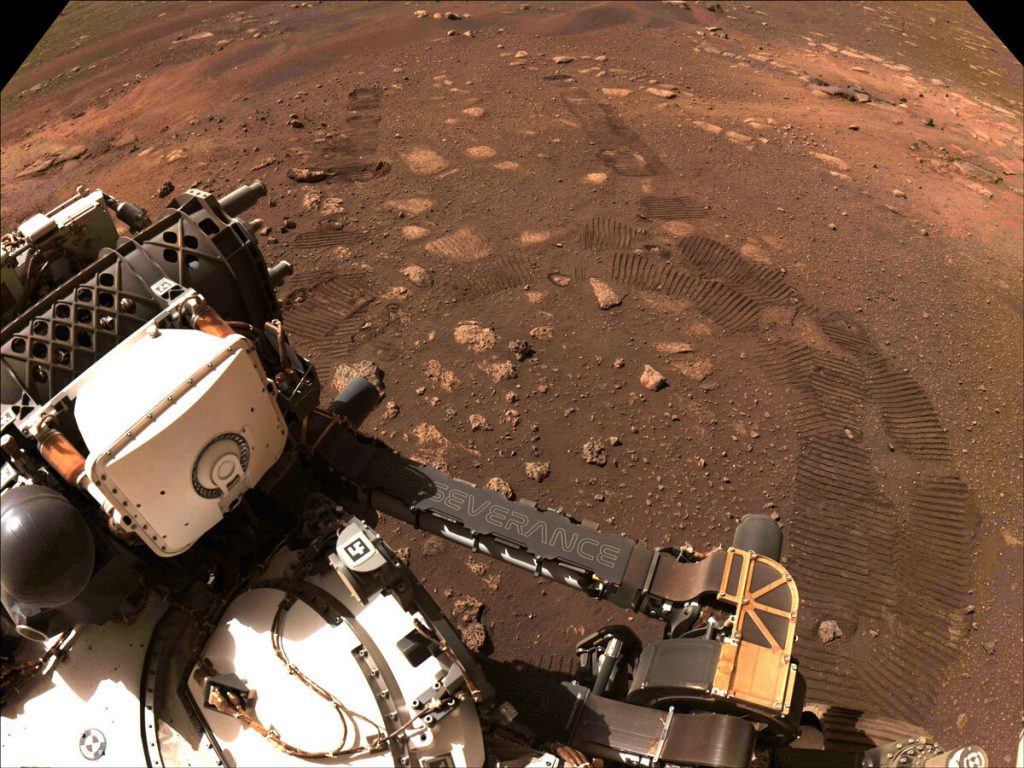
Something amazing has just happened: the first powered flight above the surface of a planet that isn’t Earth. The planet is Mars. The aircraft is NASA’s helicopter called Ingenuity. And the amazing thing is that it was actually able to fly at all in such a thin atmosphere – only about one hundredth as dense as Earth’s, in which flight is easy.

The Martian atmosphere provides a link between powered flight on the red planet and the possible existence of life there in the distant past. It’s all to do with how atmospheres evolve as planets age – in the case of Mars, from thick to thin. While the rarefied nature of the present Martian atmosphere provides the challenge for Ingenuity and later follow-ups, the probable thickness of the past Martian atmosphere may have provided the conditions for life to have thrived there long ago.
We know the present Martian atmosphere is thin because we can measure its pressure at the surface of the planet and compare it with that at the surface of the Earth – that’s the basis for the rough 1/100th ratio mentioned above. But how do we know that this same planetary atmosphere used to be thick? After all, we can’t measure that directly. Strangely, the answer lies in a combination of signs of past Martian rivers and something important that we know about stars: the way they get hotter as they get older.
The Sun, like other stars, is gradually emitting more light and heat as it progresses through its lifespan of about 10 billion years. This means that in the distant past it was cooler. So, other things being equal, there should have been even less chance of life on Mars then, than there is now. But other things are not equal. The evidence of running water is so clear that something must have enabled the Martian surface to be warm enough for there to have been rivers. The smart money is on that ‘something’ being a thick atmosphere causing a runaway greenhouse effect, just as happens on Venus today.
So, we have to imagine a long-gone Martian environment that was very different to the present one of rocks and dust. An environment in which there were rivers and lakes, probably even oceans. If there was life in these ancient bodies of water, there should still be traces of it today – molecular biosignatures at least, maybe even microbial fossils. So those are the places in which our search should be concentrated.
That’s just what’s happening with Ingenuity’s ‘big brother’, the Perseverance rover. It landed in Jezero Crater, which used to be Jezero Lake. Over the next few years, Perseverance will carefully look for signs of past life. If it finds any, that discovery will make the first flight of a Martian helicopter look like small beer.

Latest Comments
Have your say!